Dowel joints are the most common joint used in the construction of wooden or derived timber panel furniture. In the past it was much more common, gradually replaced by screws and modern fastening systems. However, it is used by DIY enthusiasts as well as by manufacturers of engineered wood panel furniture to strengthen and stiffen joints. It's also used by those who don't want to use nails or screws for joints, but are not as skilled or don't have the time to make joints as swallowtail or similar, much more complicated and where much more experience is needed. But the joint is not very strong, which is why many do not recommend it. But in combination with other systems it helps to make the object stronger.
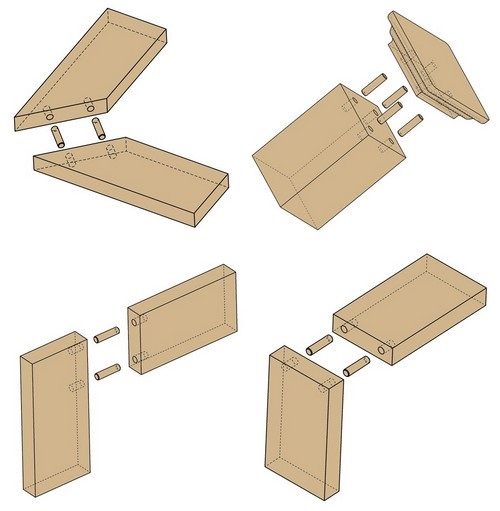
What are dowels? When is this joint used?
Fingerboards are thin cylinders of wood of various diameters and lengths, usually with grooves along their length, made from different types of wood. They are also called cepi/ceps or tipli. Basically it is a small wooden rod that joins two pieces of wood or board together. The dowels can be made by the person making the joint, but are most often bought, as they are cheap and available in different sizes. They are made from hardwood species, especially fag. If the joint is also for aesthetic purposes, wooden dowels in different colors from the furniture can be used. Several dowels are used to make the joint as strong as possible.
Dowel joints can be used to make joints along the length of the workpiece or at 90º or 45º angles. It is very important that the parts being dowel jointed are in full contact, otherwise the joint will not hold.
The dowel joint can be hidden or visible. If visible, it can contribute to the aesthetic appearance of the resulting object. It may be removable or fixed. If glue is used to fix the dowels, the joint will not be removable. This is the most commonly used because it is more resistant. Without adhesive, the joint is not very strong and can only be used for work that will not be subject to high forces.
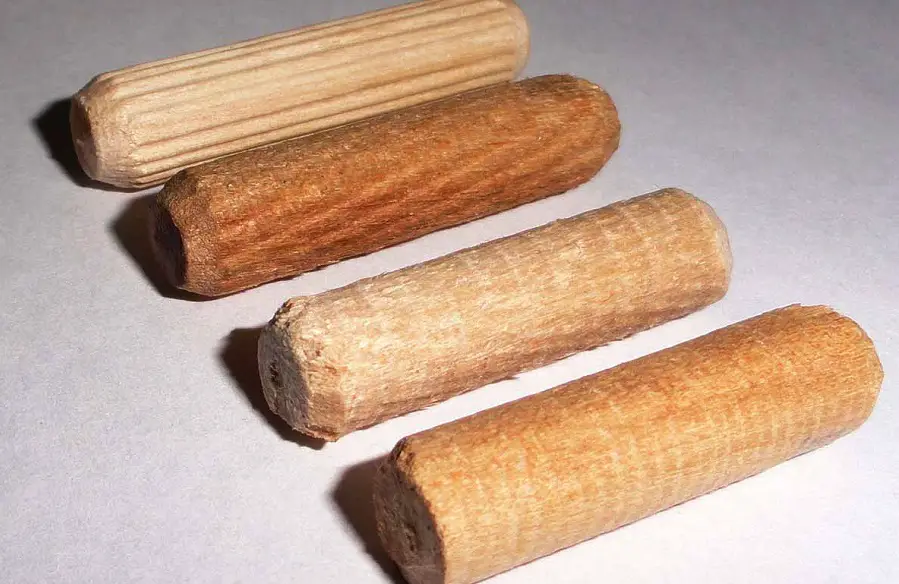
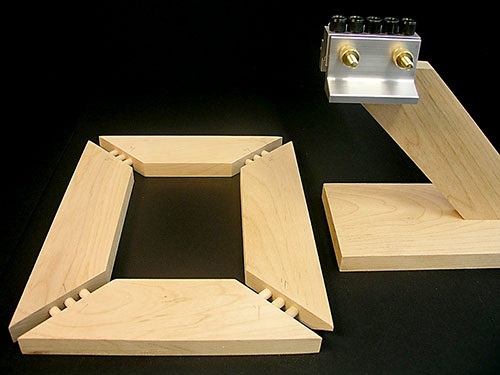
Modes of implementation
Although it is the simplest joint that does not involve nails or screws, it is not simple for a beginner to do. The joining of the two pieces is accomplished by putting the dowel into the holes drilled in the pieces so that they come into perfect contact. This is precisely the weight. To make a perfect joint, a few rules must be followed:
- The drill bit with which the holes are drilled should be chosen so that the dowels are slightly forced in so that there is no play. If they go in very hard, being much larger than the hole, there is a risk of the board cracking;
- the depth of the hole in the wood or board should be slightly more than half the length of the dowel so that when they are put together, the joint is perfect;
- the celtral axis of the holes must be perfectly parallel to that of the dowel so that the dowel fits perfectly, without being tensioned and thus weakening the joint;
- Before making the holes, the pieces are placed side by side in the position in which they are to be fastened and pencil marks are made. This avoids joints where one of the pieces sticks out a few millimeters.
- dowels must be forced into the holes. They must be tapped with a hammer to get in. It is good if the hammer is wooden so that the force is not too great and the board or wood cracks;
- The dowels are initially placed in holes without adhesive to check that the joint is perfect. The joint is then carefully loosened, glue is applied to the dowels and the parts are reassembled.
In the case of visible joints the hole pierces through the plate. The grain comes out on the other side of the board and must be cut flush. After cutting, it is sanded to a smooth, pleasant touch.
In the past, making such a joint required repeated measurements to drill the holes exactly where you wanted them to make perfect joints. Now there are systems that make the job much easier. There are stop drills that allow you to set the depth to which they go into the wood, devices that clamp on to the piece to give perfectly straight holes, or punch drills that mark the second piece after the first has been drilled so that the pieces are perfectly joined. All this makes joining accessible to a beginner. However, if you are such a beginner, before you do any jointing it's a good idea to try your hand at two pieces of wood or board. You will discover the difficult parts and it will be much easier to make the perfect object.

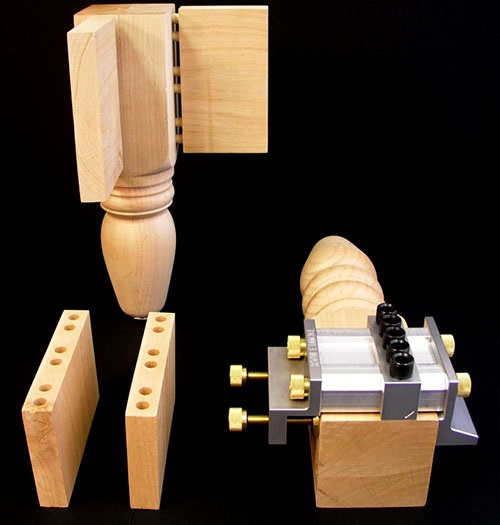
Benefits of joining
Although considered by some to be weak, plain and unspectacular, the combination has some not inconsiderable advantages:
- can be done quite simply and quickly with a drill, a suitable drill, dowels (bought very cheaply) and wood glue;
- no screws or nails needed;
- can be used at home, even by beginners, to repair wooden household items;
- Aesthetic joints can be achieved without effort or in-depth carpentry knowledge;
- it's a strong enough joint you can rely on;
- is stronger than a joint made with just nails or ordinary wood glue;
- help to strengthen and stiffen joints in derivative plates alongside other fastening systems;
- Very suitable for putting parts together at a 90º angle or in extension to be clamped securely and with systems.
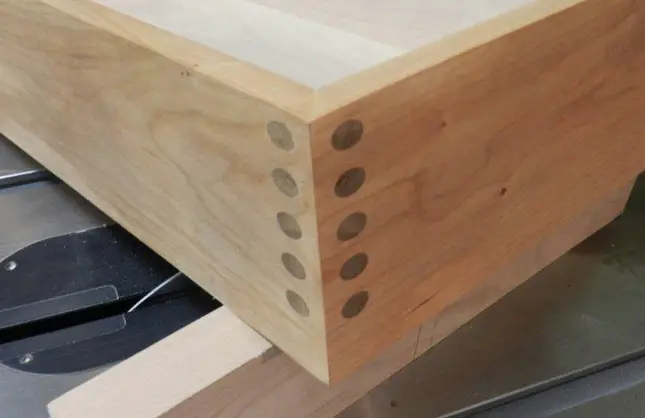
Disadvantages
As I mentioned above, the jointing is considered by many spacialists in the field to be weak and suitable mostly for beginners and household chores. Some such judgments are perhaps subjective and pretentious. However, there are disadvantages to be taken into account:
- is weaker compared to the widely used butt and socket joint and takes longer to complete;
- without auxiliary systems may be difficult for someone less experienced. It makes imperfect joints much less strong;
- dowels may fail over time and should be replaced. If there are more of them, their resistance over time is greater;
- humidity variation can lead to dimensional shrinkage of dowels. Combined with the ageing of the adhesive for various reasons (temperature, unsuitable conditions, adhesive unsuitable for the existing conditions) leads to play and ultimately to the failure of the joint.
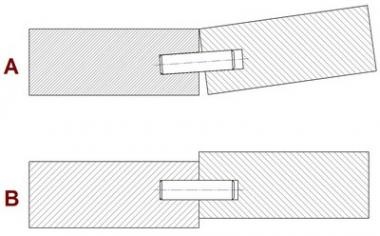
The combination that can really help in the household
In industry it is almost always used in conjunction with other fastening systems. In the home, however, it can be a very good solution for repairing or obtaining objects. We also use them when bank repair which was converted for use in the yard and when I made reclaimed wood table top. The items are holding up and have not needed repair.
Joining with dowels can also help with decorative objects. Using exotic wood dowels in dark colors can make the repaired object more attractive. Find these dowels in specialty shops. Good luck!




































[...] The type of joint used was made using dowels. I removed the old dowels, re-drilled the holes to make sure the joint would be at the proper angle. [...]
[...] The type of joint used was made using dowels. I removed the old dowels, re-drilled the holes to make sure the joint would be at the proper angle. [...]